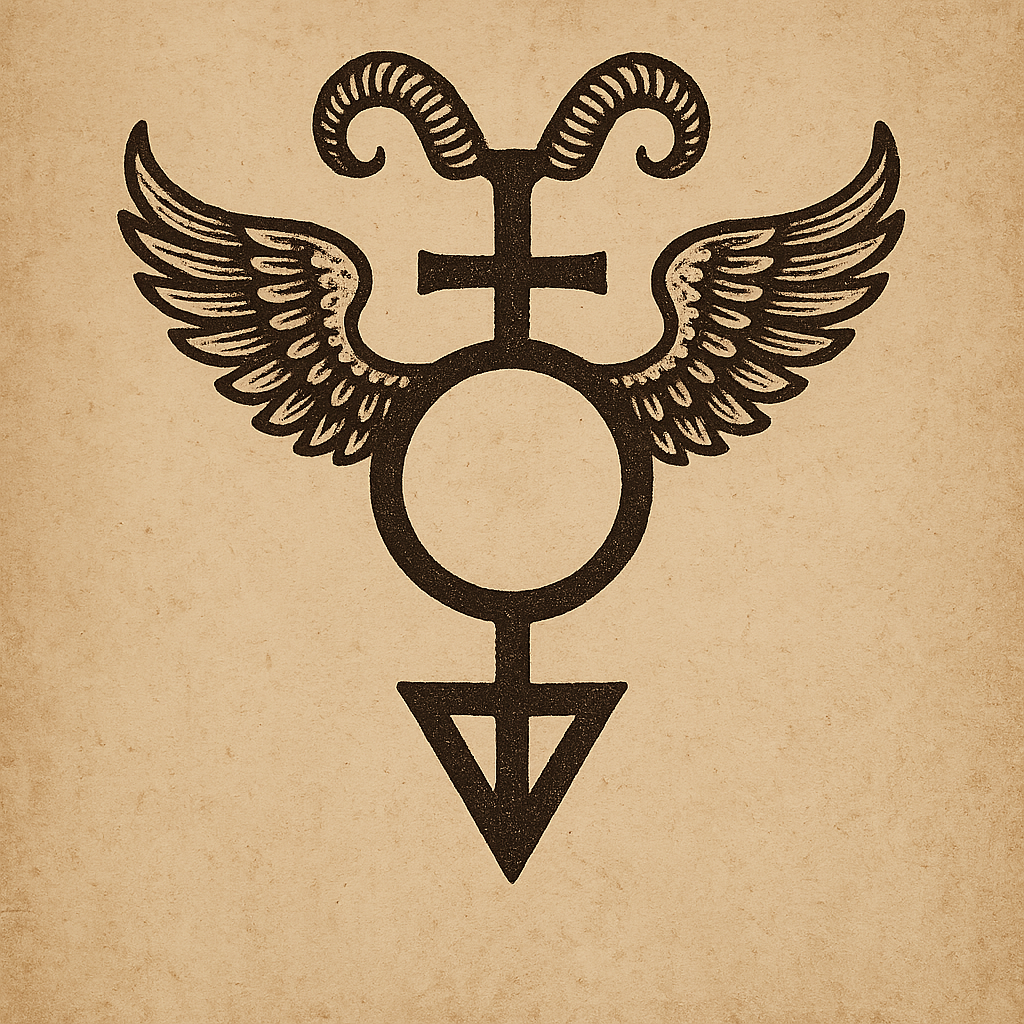All Mysteries Flow Toward the Circle

Each of these paths—Rosicrucianism, Gnosticism, and Chaos Magic—touches the living field of witchcraft, yet each does so from a different angle of the star. They are not lineages of the same trunk, but lights refracted through the same prism: the desire to know, to transform, and to stand in conscious relationship with the unseen. Witchcraft, fluid and earth-rooted, absorbs what speaks to its current and lets the rest drift away. These systems, when approached wisely, can deepen a witch’s craft without binding it to hierarchy or dogma.
Rosicrucianism emerged in the early seventeenth century, cloaked in allegory and anonymity. Its manifestos—the Fama Fraternitatis and the Confessio Fraternitatis—spoke of a hidden brotherhood devoted to the healing of the world through esoteric knowledge. In its language of spiritual alchemy and secret fraternity, Rosicrucianism framed magic as a moral art: the purification of the self mirrored by the regeneration of society. To the Rosicrucian, transformation began in the laboratory of the heart.
For witches, this resonates with the inner disciplines of the Craft—the understanding that personal refinement and spiritual practice are not separate. The imagery of the rose and cross mirrors the witch’s own symbol of union: spirit descending into matter, matter aspiring toward spirit. Many modern covens borrow Rosicrucian ideas of initiation and graded learning; others adapt its alchemical symbols for meditation or ritual focus. Yet witchcraft differs in tone: where Rosicrucianism often sought to elevate the soul through secrecy and spiritual nobility, witchcraft tends toward the egalitarian and embodied. Its mysteries arise not from hidden orders but from direct communion with nature. The Rosicrucian speaks in the language of ascent; the witch, of rooted revelation.
Gnosticism predates both, its echoes stretching back to the first centuries of the Common Era. It teaches that the world is a veil woven by lesser powers, that within each human dwells a spark of the true divine, and that liberation comes through gnosis—direct experiential knowing of that inner light. The Gnostic myth of Sophia, divine wisdom fallen into matter and seeking redemption through awareness, parallels the witch’s path of remembering and reclamation. Both view knowledge not as an abstraction but as awakening, an act of reuniting heaven and earth within the self.
In practice, Gnosticism mingles easily with witchcraft’s introspective currents: trance, meditation, and dreamwork all echo the Gnostic ascent through inner planes. A witch who walks this way may reinterpret the demiurge and archons as symbols of societal and psychological constraint—forces to be unbound rather than literal deities. Yet there are tensions. Traditional Gnosticism often regarded the material world as corrupt or illusory, whereas witchcraft celebrates matter as sacred. Where the Gnostic seeks escape from the world, the witch seeks to sanctify it. Still, both share the intuition that divinity is not external authority but inner flame, and that salvation—or power—is self-realization.
Chaos Magic, by contrast, is the youngest and most iconoclastic of the three. Emerging in the late twentieth century, it dispensed with inherited ritual structures altogether, declaring that belief itself is the engine of magic. The Chaos magician uses symbols pragmatically: deities, sigils, and systems are tools to be adopted, modified, or discarded as needed. In this lies both kinship and divergence from witchcraft. Like folk magic, Chaos Magic values results, improvisation, and personal experimentation. It thrives in the same soil of intent, visualization, and will that sustains spellcraft. Many modern witches have absorbed its techniques—sigil creation, servitor work, and shifting states of belief—into their practice.
Yet Chaos Magic’s deliberate detachment from lineage and tradition can also strip away the relational depth that defines witchcraft. The witch’s art is rooted in reciprocity—with land, ancestors, and spirit kin—whereas Chaos Magic tends toward solitary psychotechnology. The witch may borrow its tools but rarely its philosophy. Magic, for the witch, is not merely psychological manipulation but conversation with living presences. Chaos Magic, brilliant in its minimalism, risks reducing those presences to symbols of the mind. The two currents coexist most fruitfully when held in balance: innovation grounded in reverence, freedom tempered by belonging.
Taken together, these three paths form a constellation around the witch’s star. Rosicrucianism brings the discipline of spiritual refinement and the vision of the world’s healing. Gnosticism offers the inward mirror of divine self-recognition. Chaos Magic contributes adaptability and the courage to dismantle forms that have grown rigid. Each can enrich witchcraft’s language of transformation, provided they are not mistaken for the Craft itself. Witchcraft remains the living matrix that absorbs, tests, and translates.
At their crossroads, we glimpse the same truth expressed in different dialects: that the divine is both immanent and discoverable, that knowledge and transformation are sacred acts, and that magic—whether sung in the name of Sophia, of the Rose Cross, or of pure Will—arises wherever consciousness remembers its kinship with creation. The witch, walking between fields and stars, listens to them all and weaves their harmonies into her own spell.

